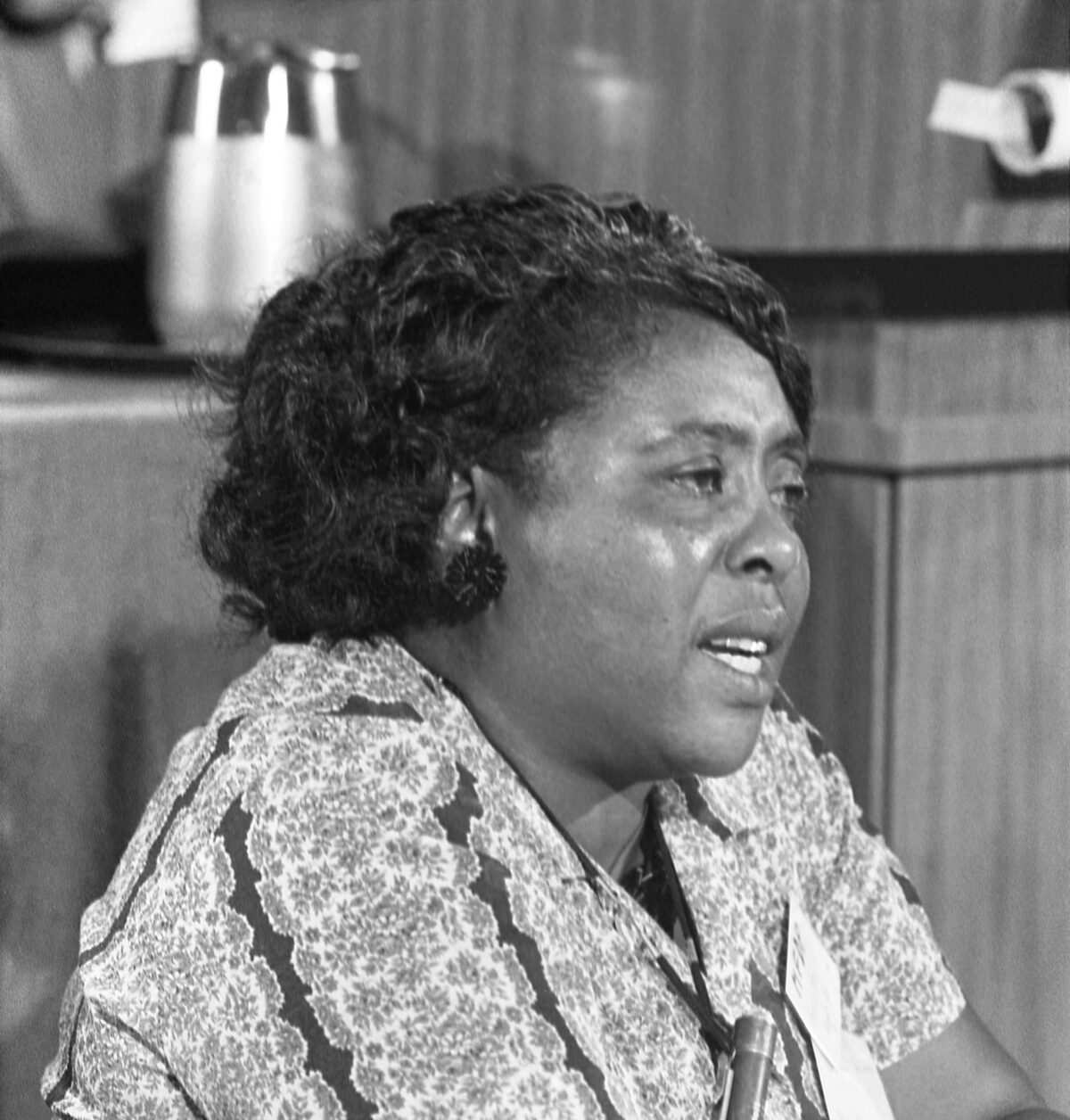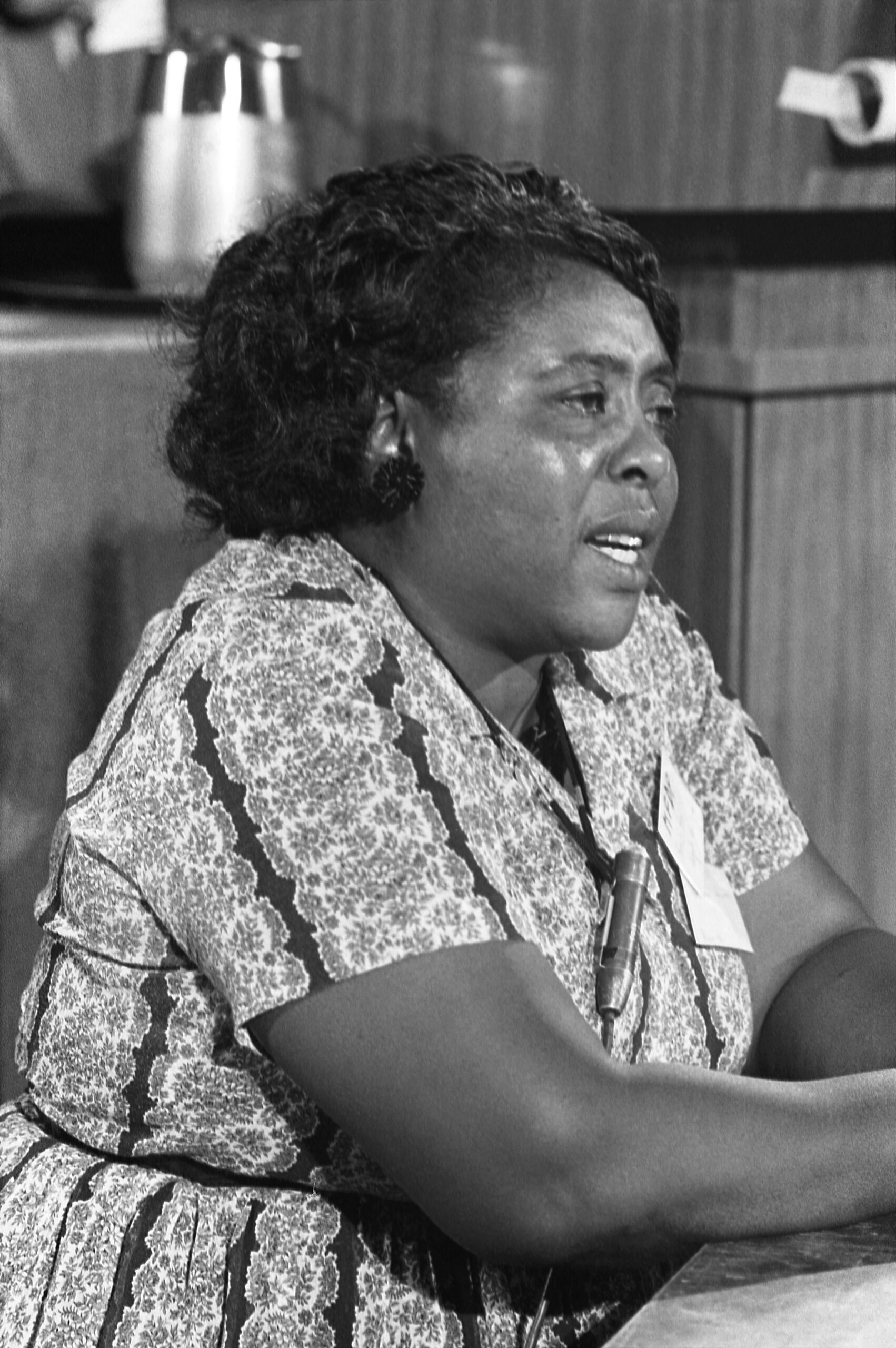Co-Governing Toward Multiracial Democracy: The Mississippi Freedom Democratic Party

The Mississippi Freedom Democratic Party and the Ongoing Struggle for Power
The struggle to build a truly democratic and racially just government and society is a deep American tradition.
ON AUGUST 22, 1964, A BLACK WOMAN FROM THE MISSISSIPPI DELTA sat in front of the Credentials Committee at the Democratic National Convention in Atlantic City. The woman was Fannie Lou Hamer, a delegate of the Mississippi Freedom Democratic Party (MFDP) and now a well known civil rights leader.

The MFDP was founded by Black people from the Deep South and young multiracial organizers from the Student Nonviolent Coordinating Committee (SNCC) as a vehicle to challenge the exclusively white Southern Democrats by fostering democratic participation for those who were still denied their right to vote. During what became known as the Summer of Freedom, hundreds of volunteers worked with Fannie Lou Hamer and other local organizers including E.W. Steptoe, Victoria Gray, Annie Devine, Hartman Turnbow and Hazel Palmer to recruit Black Mississippians to join the MFDP1. Community meetings were held in churches, Masonic temples, cafes, pool halls, juke joints, and anywhere else Black people congregated2. Using ideas developed during local, county, and regional meetings, the membership crafted a political platform. The MFDP had created a structure for Black people in the South to participate in the democratic political process for the first time since Reconstruction.
Some 87 years after the end of Reconstruction, Mrs. Hamer and the other organizers of the MFDP had survived a new reign of state and vigilante terror aimed at upholding white supremacy. Organizers understood there would be no future for the disenfranchised without the power to shape and control the laws, policies, and distribution of resources that kept them trapped at the bottom of the social hierarchy. Yet before Mrs. Hamer’s testimony could be broadcast on television screens across the country, the live feed of the convention was abruptly cut off. President Lyndon B. Johnson had hastily called a press conference to silence Mrs. Hamer and the MFDP.
She gave her speech nevertheless. If Johnson hadn’t successfully blocked Mrs. Hamer’s message from reaching the public, they would have heard her describe the beatings and torture Black people faced struggling to forge a path for a multiracial economic democracy. Mrs. Hamer closed her testimony calling out the hypocrisy of American democracy.
“All of this is on account we want to register, to become first-class citizens, and if the freedom Democratic Party is not seated now, I question America. Is this America, the land of the free and the home of the brave where we have to sleep with our telephones off of the hooks because our lives be threatened daily because we want to live as decent human beings, in America?”
– Fannie Lou Hamer
President Johnson was more concerned with maintaining a harmonious Democratic rule than supporting the integration of the Southern Democratic Party. He had built a coalition of allies, including labor, northern Democrats, and liberal leaders that worked to undermine the MFDP and tried to force their delegation of 68 people to accept only two seats at the convention. The MFDP rejected their proposal.
The MFDP built a political vehicle that could harness the power of the grassroots to shift the political system in Mississippi and throughout the South3. They may have been turned away and denied recognition by the Democratic Party on that historic night, but they were by no means unsuccessful.
Black people organizing throughout the American South were at the heart of the Second Reconstruction. Their political organizing forced the democratic system to expand by enshrining the protection of civil rights into law and enfranchising millions of Black people through the passage of the Civil Rights Act and the Voting Rights Act. Fannie Lou Hamer, the National Council of Negro Women, and others also led economic organizing, establishing projects like the Freedom Farm Cooperative and the Pig Project to support Black livelihoods and economic sovereignty. Taken together, their political and economic organizing looked beyond simply winning power within the traditional, exclusionary elections and representative government.4 Their work is part of a broader legacy in Black and other communities to build both political and economic democracy.
“We didn’t come all this way for no two seats since all of us is tired.”
– Fannie Lou Hamer
We now know, of course, that in the 1970s, a fierce counter-reaction would follow. Popular racial resentments, law-and-order politics, economic shocks, and devastating attacks on progressive forces including unions, Black Power organizations, and feminist Equal Rights Amendment activists would roll back progress toward true multiracial political and economic democracy. Today, the gains of the Civil Rights Movement are being systematically stripped away and democracy in the U.S. is once again constricting instead of expanding.
So what does this mean for today? Reverend William Barber II of the Poor People’s Campaign and many other civil rights leaders, organizers, and historians have suggested that we may be in the midst of a Third Reconstruction. Just like the Second Reconstruction, Black organizers in the American South are at the heart of this struggle. While we continue to fight to build political power capable of staving off white minority rule, we should be heartened by the scope of Black-led, Indigenous-led, Latina/o/x-led5, Asian-led, and multiracial organizations across the country waging campaigns to shift decision making power over policies, practices, and distribution of resources through co-governance. Leaning on the leadership and lessons from the Black Liberation Struggle, the following case studies demonstrate community organizations working with local governments to create the structures necessary for effective co-governance. From Paterson, New Jersey, to San Francisco, to Jackson, Mississippi, they are part of the ongoing struggle to construct a multiracial economic democracy that meets the needs of all people.
ENDNOTES
1 “Mississippi Freedom Democratic Party (MFDP),” SNCC Digital Gateway, SNCC Legacy Project and Duke University, https://snccdigital.org/inside-sncc/alliances-relationships/mfdp/
2 Bruce Hartford, “Civil Rights Movement History, 1951-1968,” Civil Rights Movement Archive, Duke University Libraries and African American Civil Rights Network, https://www.crmvet.org/tim/timhome.htm
3 “MFDP.”
4 “Fannie Lou Hamer founds Freedom Farm Cooperative,” SNCC Digital Gateway, SNCC Legacy Project and Duke University, accessed Oct. 28, 2022, https://snccdigital.org/events/fannie-lou-hamer-founds- freedom-farm-cooperative/. Rebecca Turi, “Building the Collective “voice of Negro women in Mississippi”: The National Council of Negro Women in Mississippi in the 1960s and 1970s,” Mississippi History Now, Mississippi Historical Society and Mississippi Department of Archives and History, June 2020, https://mshistorynow.mdah.ms.gov/issue/building-the-collective-%E2%80%9Cvoice-of-negro-women-in- Mississippi%22-the-national-council-of-negro-women-in-mississippi-in-the-1960s-and-1970s.
5 In this report, we refer to Latino, Latina, Latinx and Hispanic people as Latina/o/x to inclusively refer to people of Latina/o/x origin of all gender identities. We understand that not all Latina/o/x people use terms such as Latinx and Latine, and we are committed to the use of inclusive language wherever possible.
